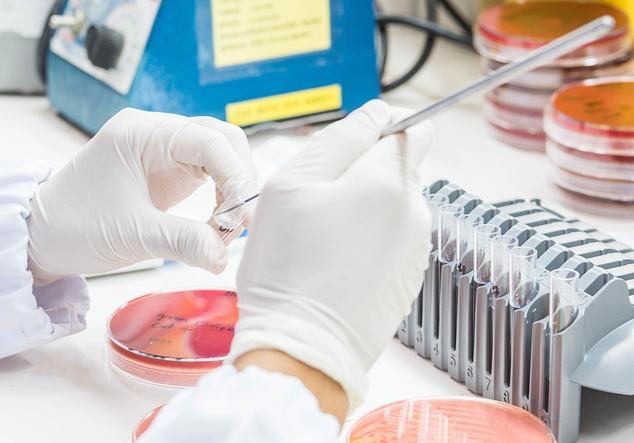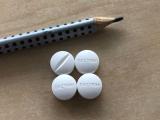When you hear people talk about antimicrobial resistance and the search for new antibiotics, you often hear about the "broken pipeline." It's a phrase used to convey the scientific and financial hurdles that confront pharmaceutical and biotech companies as they search for new drugs that can be deployed against increasingly resistant bacterial pathogens.
A year ago, a new initiative was launched to help repair that pipeline, with a focus on finding novel products to fight gram-negative bacterial infections. The Combating Antibiotic Resistant Bacteria Biopharmaceutical Accelerator, also known as CARB-X, brought governmental organizations, nonprofits, academia, and industry together to provide funding and expertise to companies in the pre-clinical phase of drug development. It's the world's largest public-private partnership focused on the pre-clinical development of antibacterial drugs.
To date, CARB-X has awarded more than $40 million to 18 biotech companies with a variety of products in pre-clinical development, including $17.6 million announced 2 days ago. But CARB-X executive director Kevin Outterson, JD, says the initiative is just getting started. CARB-X aims to invest up to $450 million over 5 years to accelerate the discovery and development of at least 20 new antibacterial products.
"We're going to be directly responsible for a significant percentage of the most novel pipeline antibiotics in 5 years," Outterson said in an interview. "Five years out, almost everything that we think of as innovative and outstanding in the clinical pipeline will have come through our doors."
Why the pipeline is broken
To comprehend how much this infusion of money means to the biotech companies that have received CARB-X funding, you have to understand the unique challenge of developing new antibiotics. While all new drug development is scientifically challenging and expensive, companies that produce new medications for heart disease or diabetes will recoup their investment costs, because patients who take these medications will remain on them for the rest of their lives.
Antibiotics, however, are the only class of drugs whose use limits their effectiveness. The potential for bacteria to develop resistance to all new treatments creates a disincentive for widespread use of a new antibiotic. And that makes it a "tough space to develop a drug with high return," explains Allan Coukell, a senior officer with the Pew Charitable Trusts.
"If you develop a great new effective drug for gram-negatives, we would say 'thank you very much; we'll keep this one in reserve for when we really need it,'" Coukell said. Instead, clinicians will likely keep using an existing, off-patent drug that may have some resistance issues but is still effective.
As a result, large drug companies haven't been focusing their efforts on antibiotics. In 2016, only four large pharmaceutical firms were involved in antibiotic development. The last new class of antibiotics for acute bacterial infections was discovered in 1984, and the last antibiotic for gram-negative bacteria was discovered in 1982.
That's left an opening for smaller biotech companies and scientists who are entirely focused on new antibiotic development. But finding a molecule with a novel target or mechanism of action against drug-resistant bacteria—in itself a challenge—is just the beginning of a long journey. It's the pre-clinical phase, in which researchers determine how well the drug works in animals and how the drug moves through the body, where the expense and the risk grows. Finding investors to help fund that phase is difficult.
"The challenges are economic," Outterson said. "What these companies need is not another superstar microbiologist telling them what to do; what they need is funding."
That's where CARB-X comes in, providing non-dilutive financing—which means the companies don't have to give up equity in their business—to biotech companies to help get their products into phase 2 clinical trials, where drug efficacy is tested. Outterson said that part of the impetus for creating CARB-X came from one of its leading partners, BARDA (the US Biomedical Advanced Research and Development Authority), which provides funding for products that have already made it to phase 2 and 3 clinical trials.
"BARDA was under-impressed with the next round of applicants to their program, and they realized that what they needed was something that would improve the quality, the innovativeness, and the novelty of what was coming out of the pre-clinical pipeline," he explained.
"Being able to provide this kind of early-stage support helps the businesses that are still in the space be viable," Coukell added.
Promising candidates
With its first two rounds of funding, CARB-X is supporting the development of eight potential new classes of antibiotics with activity against gram-negative bacteria, a potential treatment for drug-resistant gonorrhea, a rapid diagnostic test, and several non-traditional products that use alternative approaches to fighting gram-negative pathogens. The projects all target the gram-negative bacteria that have been prioritized by the World Health Organization (WHO) and the US Centers for Disease Control and Prevention (CDC).
One of those products is SPR741, from Cambridge, Mass.–based Spero Therapeutics. SPR741 is not a new antibiotic, explains Spero chief commercial officer Cristina Larkin, but rather an analog of an existing antibiotic—polymixin B—that can increase the spectrum and potency of more than two dozen classes of gram-positive antibiotics. What's novel about SPR741 is that it cracks the code of gram-negative bacteria, which are difficult to attack because of their thick outer membrane.
"We really went on a hunt to figure out if there were novel ways to attack the bacteria," Larkin said of Spero's approach. "If we could only find new ways to get through that outer membrane, then we would have a host of new options available to us."
While polymixin B on its own is effective against gram-negatives, it's also been associated with kidney toxicity, which limits the amount clinicians can use. Spero scientists were able to develop a version of polymixin that has no inherent antimicrobial effects and has shown low toxicity in animal models, but can still penetrate the outer membrane of gram-negative bacteria. When SPR741 combined with gram-positive antibiotics that are ordinarily ineffective against gram-negatives, like azithromycin, it turns those drugs into a weapon against some of the toughest multidrug-resistant gram-negative infections clinicians face, such as carbapenem-resistant Enterobacteriaceae (CRE) and Acinetobacter baumannii.
"Now you're not only able to expand the spectrum of agents, but potentially add potency that didn't exist before," Larkin said. Spero is receiving $1.6 million over 12 months from CARB-X for further development of SPR741.
Just a few miles away, in Waltham, Mass., John Mueller, PhD, and his colleagues at Entasis Therapeutics are equally excited about ETX0282, a novel oral antibiotic for which CARB-X has awarded $2.1 million over 9 months. ETX0282 inhibits the ability of bacteria to produce extended-spectrum beta lactamase (ESBL), an enzyme that provides resistance to beta-lactam antibiotics. When combined with the beta lactam antibiotic cefpodoxime in vitro and in animal tests, ETX0282 has demonstrated activity against dangerous multidrug-resistant organisms like CRE and ESBL-producing Escherichia coli.
As Mueller, chief development officer at Entasis, explains, growing resistance in these organisms to fluoroquinolone antibiotics means that patients with urinary tract infections caused by ESBL-producing E coli, for example, have no oral therapy options and require intravenous (IV) therapy. "We think ETX0282 offers the potential for responding to this need as an alternative oral therapy to treat these infections and resistant pathogens," Mueller said.
In addition, Mueller explains that having an oral treatment to step down to after IV therapy could reduce the amount of time patients have to spend in the hospital, which would reduce the risk of secondary infections in patients and ease the economic burden on the healthcare system.
Both Mueller and Larkin say that the CARB-X funding has been critical for the early development of their products, helping the companies accelerate their pre-clinical research and attract additional investment. And that sets them up well for the next phases of development.
"What we do in the pre-clinical components has high levels of predictability in clinical outcomes," Larkin said. "It's one of the few areas of medicine where the work we do in the early stages gives us a great deal of confidence in how a drug will perform in a clinical trial."
And it's not just the money that's helpful, Mueller adds. It's also the business and drug development support provided by the CARB-X partners, including BARDA, the UK-based Wellcome Trust, and the National Institute of Allergy and Infectious Diseases (NIAID). "I think the insights, the expertise, the collaborative science that CARB-X brings to this is really value-added and impactful for a start-up like Entasis," he said.
Pull incentives needed
The road ahead for Spero, Entasis, and the other CARB-X winners is still a long one, and success is not guaranteed. The goal for CARB-X is to get these products successfully through phase 1 clinical trials so they can attract additional capital for phase 2 and 3 trials. Given the inherent challenges of drug development, some of the new antibiotic candidates may never make it to the clinic. During the announcement for the first round of CARB-X winners, Outterson noted that even if just one of these companies is successful, "it will be the most significant innovation against gram-negative bacteria in my lifetime."
But the other end of the pipeline needs fixing too, Outterson says. While "push" incentives like the CARB-X funding can help companies bring new antibiotics to market, there's still a problem if hospitals and clinicians want to hold those drugs in reserve until they're absolutely needed. The return on investment for new drugs is directly proportional to the volume of drugs sold, not the public health value of those drugs. That's why there is a growing call for "pull" incentives that aim to ensure that a new antibiotic will be profitable if it reaches the market.
These incentives could take the form of market entry rewards, in which companies would receive a large sum of money from governments or an established fund for developing a new antibiotic, or market exclusivity vouchers, which would allow the companies that develop a novel antibiotic to extend exclusivity of any drug in their portfolio. Many other options are being considered, and most experts agree that a combination of pull incentives will be needed.
"If we do not fix the broken business model for how antibiotics are sold and reimbursed in places like the United States and Europe, then ultimately we'll be sending these products to the market and they'll have a very poor showing," Outterson said. "It will be like marching an army out into the desert without providing them any water."
See also:
Mar 30 CIDRAP News story "CARB-X awards $24 million for new antibacterial products"
Jul 25 CIDRAP News scan "CARB-X awards $17.6 million to fund new antibiotic development"























